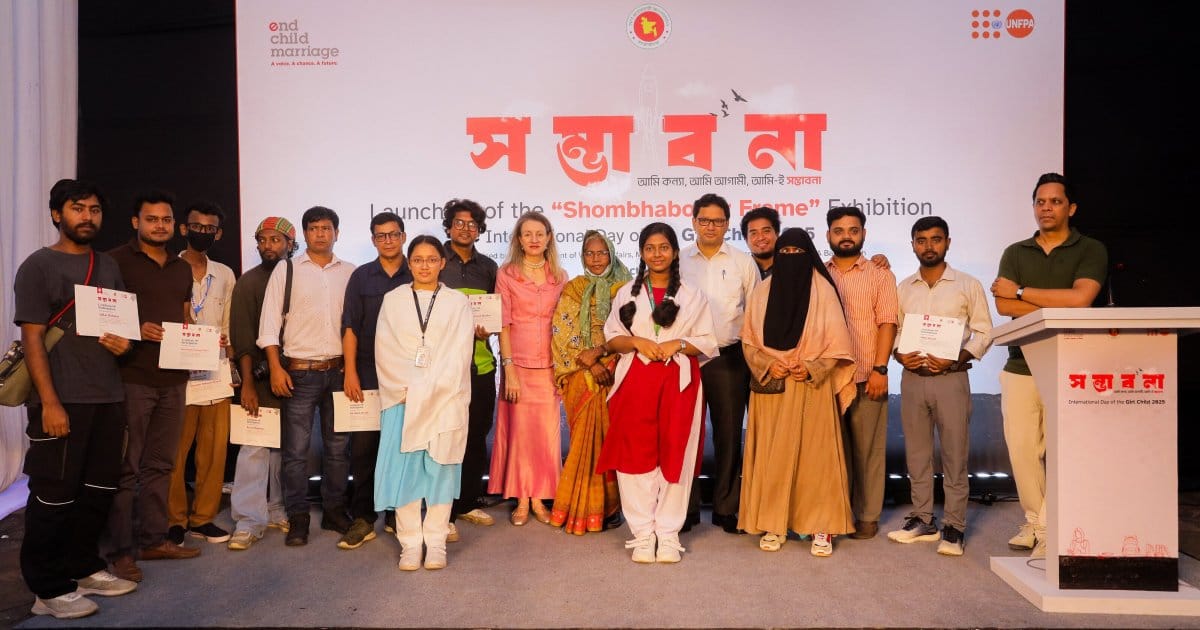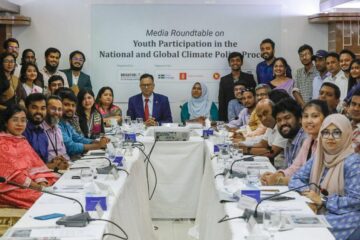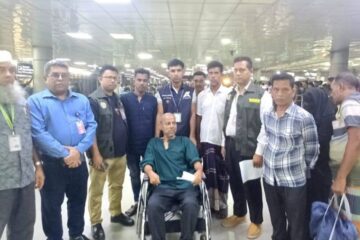With child marriage still affecting 51% of girls in Bangladesh—one in every two—the government has intensified efforts to eliminate the practice through a coordinated, multi-ministerial approach.
At the current pace of a 2% annual decline, it would take nearly two centuries to eradicate child marriage.
Determined to accelerate progress, government convened a high-level Inter-Ministerial Dialogue to chart a unified roadmap for ending child marriage once and for all.
Led by the Ministry of Women and Children Affairs and the Department of Women Affairs, and supported by the United Nations Population Fund (UNFPA), the dialogue brought together senior officials from the Ministries of Education, Law and Justice, Health and Family Welfare, Information and Broadcasting, Social Welfare, the Local Government Division, and the Cabinet Division.
The goal: to translate data and commitments into actionable, time-bound reforms.
“The acceleration we seek will only be achieved when these actions are taken in tandem, creating a web of protection so strong that no girl can fall through,” said Catherine Breen Kamkong, UNFPA representative in Bangladesh.
“A girl kept in school is still at risk if she lacks legal protection, life skills, and opportunities. A strong law is meaningless without enforcement. Today’s meeting reflects a true whole-of-government response.”
Action points
To fast-track the end of child marriage, key ministries have committed to coordinated, evidence-based reforms.
The Ministry of Law and Justice will digitize marriage registration and amend existing laws to prevent age fraud.
The Ministry of Education will boost school retention and life skills education, positioning learning as a shield against early marriage.
Health authorities will integrate adolescent reproductive services into universal coverage, with tailored support for young married girls and parents.
Local governments will enforce birth and marriage registration and receive performance-based funding.
The Cabinet Division will embed child marriage prevention into national plans and mandate district-level action.
Meanwhile, the Ministries of Social Welfare and Information will tackle economic drivers and gender norms through social protection and mass awareness campaigns.
“While Bangladesh has made commendable progress for women and girls, child marriage remains a major challenge,” said Mamtaz Ahmed, senior secretary of women and children affairs ministry.
“It snatches away a girl’s childhood, cuts short her education, and creates severe health risks—all of which hinder our national development. The government is resolute in its commitment to ending this practice through coordinated action.”
The meeting concluded with an agreement to present the consolidated action plan at the upcoming National Child Marriage Prevention Committee meeting for endorsement.
Earlier in the day, participants visited the “Shombhabonar Frame (Framing Possibilities)” photo exhibition, which showcased the lives and aspirations of adolescent girls across Bangladesh.
The powerful images and stories anchored the policy dialogue in lived experiences, reinforcing the urgency of protecting girls from early marriage and investing in their education, health, and empowerment.
“We have the evidence. We have a plan. And now, we have the collective will to act,” concluded Breen Kamkong.
“Together, we can build a Bangladesh where every girl’s childhood is protected, her choices respected, and her potential fully realized.”



